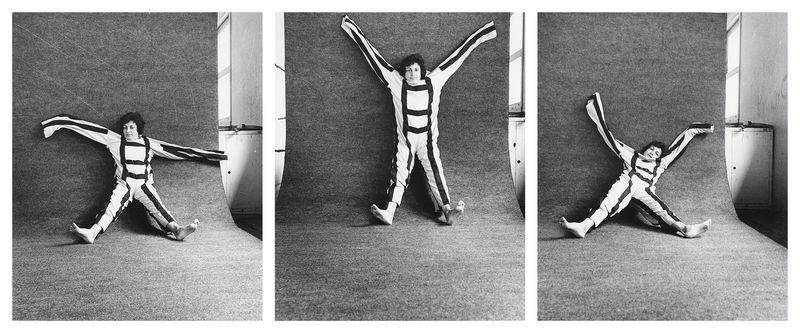
Martha Araújo, Artist
Para um corpo nas suas impossibilidades (For a body in its impossibilities)
, 1985
During the early 1980s Martha Araújo began creating what she called performatic objects. These were wearable textile pieces that invited public participation and combined performance and sculpture, as in the series Hábito/Habitante and Para um corpo nas suas impossibilidades. These works focus on issues central to Araújo's art research: the limits of the body, the play between repression and freedom, and the relationship between the self and the other. In Para um corpo nas suas impossibilidades, the participants wore overalls with Velcro, a material that facilitates adhesion and strains separation, enabling them to stick to and remove themselves from walls and from other participants. Explaining the motivations behind this work, the artist said, "I always wanted to tie myself up to then untie myself and feel freer."
A principios de los años 80, Martha Araújo empezó a crear objetos performáticos (como los llamaba la artista). Se trataba de piezas textiles usables que invitaban a la participación pública y que combinaban performance y escultura, como en la serie Hábito/Habitante y Para um corpo nas suas impossibilidades (Para un cuerpo en sus imposibilidades). Estas obras tratan temas fundamentales en la investigación artística de Araújo: los límites del cuerpo, el juego entre la represión y la libertad y la relación entre el yo y el otro. En Para um corpo nas suas impossibilidades, los participantes vestían overoles con Velcro, un material que facilita la adhesión y causa forcejeo al separarse, el cual les permitía pegarse y retirarse de las paredes y de otros participantes. "Siempre quise atarme para luego desatarme y sentirme más libre", dijo la artista con respecto a las motivaciones detrás de esta obra.


